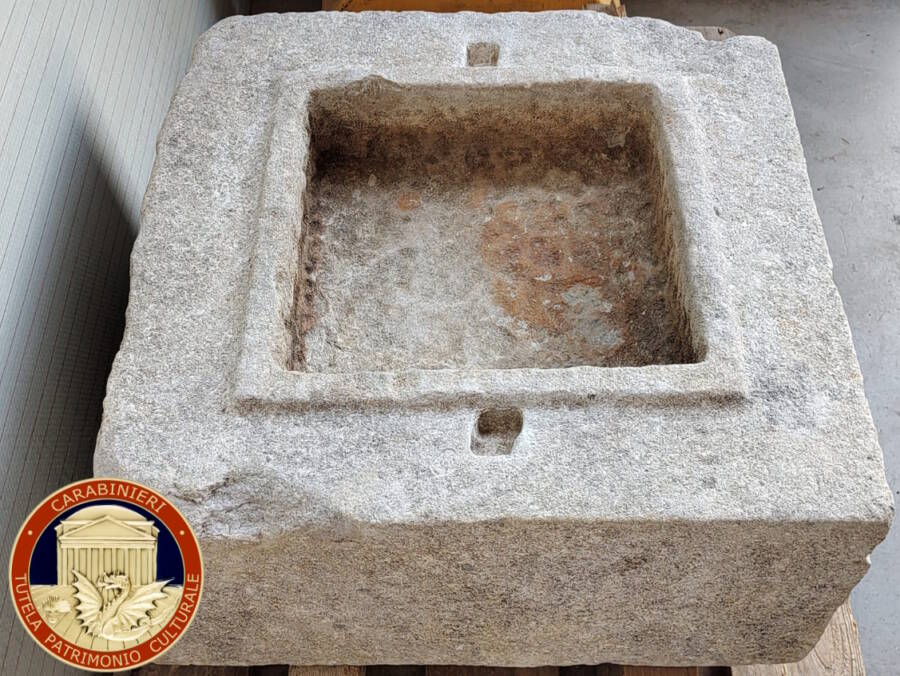Despite a law requiring people to report any archaeological discoveries on their property, the urn sat unreported for 50 years before its new owners finally alerted local officials.

Concord National MuseumThe Roman urn found in a garden near Venice, with its worn, abraded inscription on the front.
A massive Roman urn once used to hold the ashes of the dead after cremation was recovered 50 years after a family in northern Italy found it on their property — because they never reported finding it.
This massive limestone artifact was found in the small town of Portogruaro, located northwest of Venice, dates back to sometime between the first century B.C.E. and the first century C.E., and features an inscription indicating that it was commissioned by Attius Lucullus, a member of the prominent Attii family.
New Homeowners In Italy Find An Ancient Roman Urn In Their Garden
The discovery was first reported on June 14 by the Italian publication Finestre sull’Arte, following an investigation that took place between October 2023 and January 2024. The urn was originally found in the Portogruaro countryside, at a farmhouse that was acquired as part of an inheritance. However, since the owner lacked a valid title, the urn was seized. The new owner was fully cooperative in the seizure.
According to the report, the urn was first found sometime around the late 1960s or early 1970s in a field near the cottage. At some point, it changed hands and came into the possession of another party, after which it was abandoned in the cottage’s garden until new owners moved in and reported it to the Padua Superintendency.

Concord National MuseumThe small cavity carved into the top of the urn where ashes of the dead were once held.
When the investigation concluded in January 2024, the Pordenone Public Prosecutor’s Office ordered the release of the urn to the state. It was then assigned to the Concordiese National Museum in Portogruaro.
The Story Behind The Urn’s Inscription
The urn’s inscription is only partially legible, but it does offer some insight into who originally commissioned this artifact and why.
At present, the urn’s text has been deciphered as follows:
L(ucio) Attio Sex(ti) f(ilio) patri,
C(aio) Attio Sex(ti) f(ilio) patruo,
[-] Attio L(uci) f(ilio) fratri,
[-] Attius L(uci) f(ilius) Lacullus.
From what historians have been able to glean thus far, the partially legible inscription suggests a dedication by a member of the prominent Atti family, Attius Lucullus. The family was well known in the region, and several other similar dedications have been found in ancient Altinum, located southeast of Portogruaro. The text indicates that Attius Lucullus was dedicating the urn to three male relatives: his father Lucius, his paternal uncle Caius, and his brother, though researchers noted that it’s difficult to read his name on the worn and abraded inscription.
This funerary box is made of limestone and cut into a roughly square, rhomboid shape. At the top, there is a square cavity that would have held the cinerary remains. Once, there would have been a lid to cover this cavity but it, along with any ashen remains, is seemingly long lost.
Museum historians, however, are actively working to further investigate the urn. This includes both technical and art-historical examinations, which are set to be carried out by archaeological officials from the Superintendency of Padua and the Veneto Regional Museums Directorate, as well as professors from Ca’ Foscari University in Venice.
After reading about this remarkable discovery, check out our gallery of fascinating ancient Rome facts. Then, learn all about the fall of the Roman Empire.





